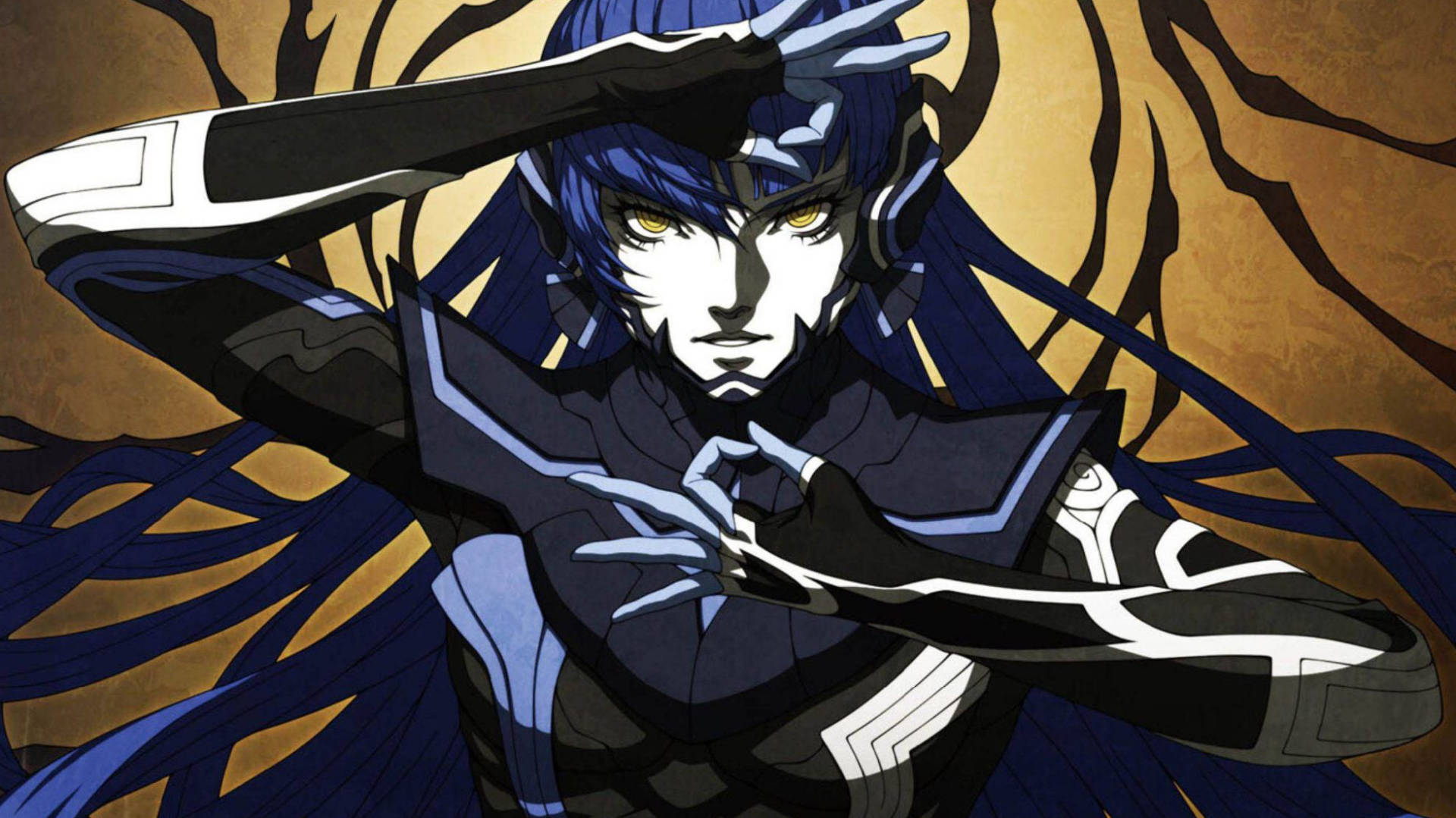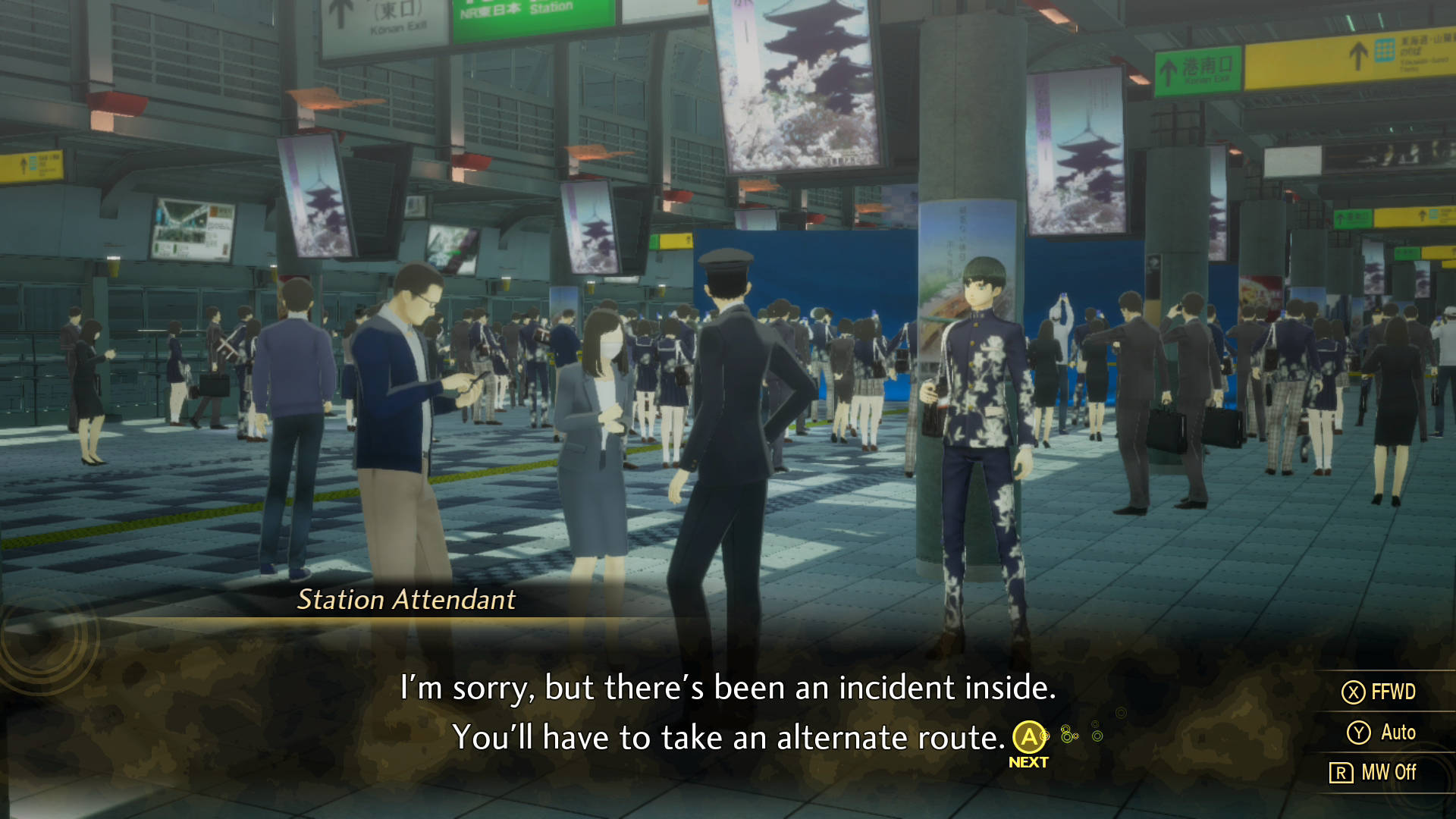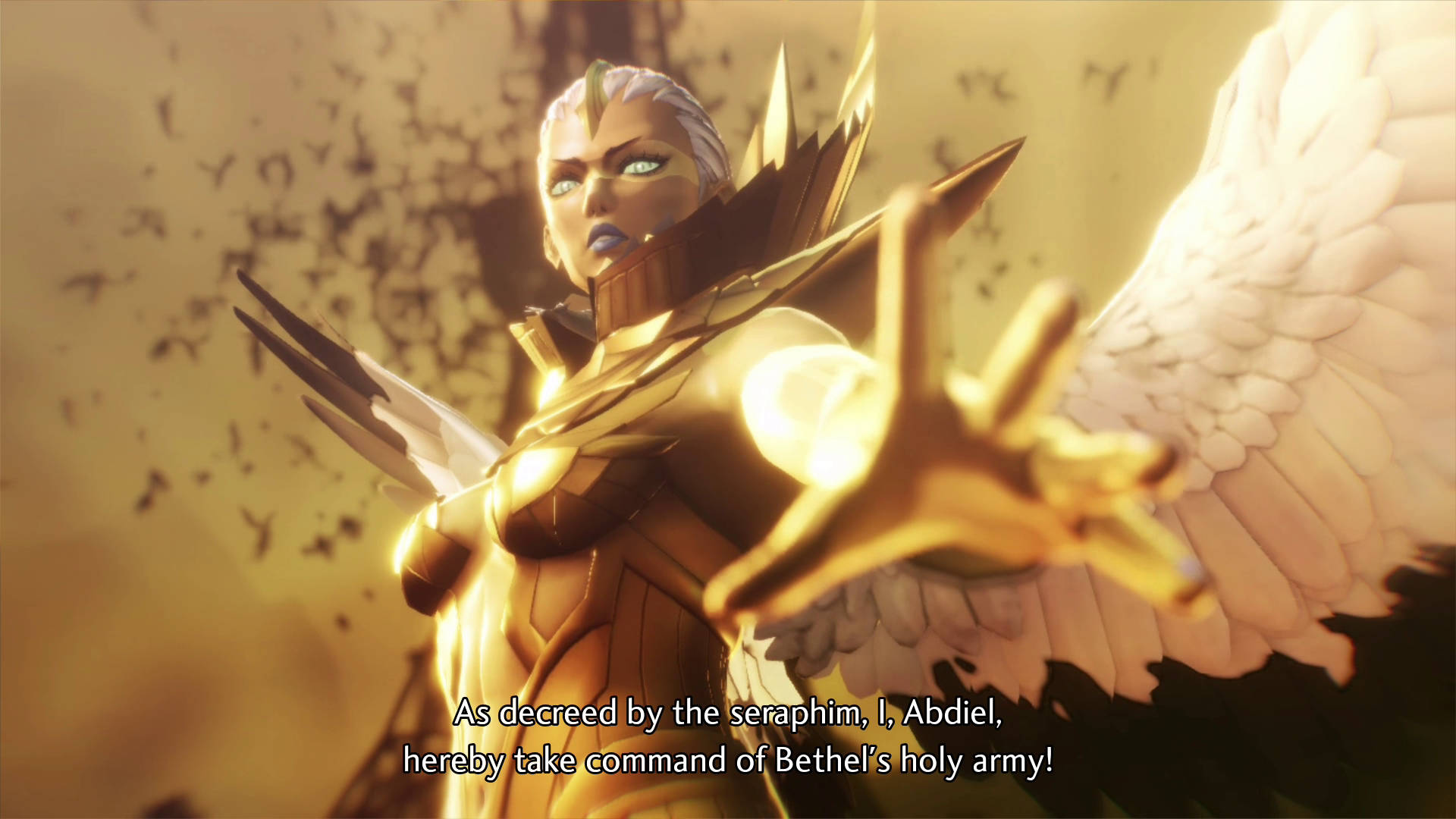Shin Megami Tensei V Review
While it was the original Persona that drew me into the overarching world of Megami Tensei, it was the core Shin Megami Tensei titles themselves that have most fueled my fandom for Atlus’ RPGs over the years. While Persona has gotten stuck in a bit of a rut in terms of storylines and characters in recent years, SMT has continually experimented with a variety of subject, locations, and even time periods. And, as the Persona series became more casual-friendly in response to skyrocketing popularity, its sibling has seemed unwilling to budge.
And that, really, has been the biggest shock for me playing Shin Megami Tensei V. I was certain that Atlus would use the game as a means to bring in new blood by making it easier and more straightforward to play while simultaneously filling it with more narrative drama and market-friendly characters. I mean, why wouldn’t they? With the Switch the blockbuster success that it is, and the Persona series winning over all of those new fans, it only made sense that this would be the point when you give Shin Megami Tensei a makeover to appeal more to the masses.
Atlus absolutely did not do that, though. Shin Megami Tensei V is hard, and weird, and obtuse, and noisy (which I say as a compliment to its more industrial soundtrack), and “boring” at times—and that just makes me so happy. Beyond some elements that wouldn’t have been possible on a technical level, you could tell me that this game was originally meant to be part of Atlus’ now-legendary line of PlayStation 2 SMT releases and I wouldn’t question that statement. There was a part of me that truly didn’t think that we would see a new project like this come from modern-era Altus anymore, yet this is a game that proudly wears the legacy and traditions of its series on its fashionable sleeve.
That’s not to say that Shin Megami Tensei V feels outdated as a game, however. Atlus has always done a good job of carrying over the quality-of-life changes it makes to one MegaTen game into future releases, and that continues here. From fighting demons to fusing them into more powerful allies, the interface is friendlier, more helpful, and more informative than it’s ever been.
One of the biggest twists in Shin Megami Tensei V is that much of the game plays out in large open-world areas that link important locations or events together. They aren’t “large” compared to other games out there like, say, Red Dead Redemption 2 or Assassin’s Creed Valhalla, but certainly when you look at past MegaTen titles. From the original Persona to Shin Megami Tensei III: Nocturne, the overworld has typically been the means through which you travel from one place to another—and, really, not much more than that. Here, the focus has shifted away from dungeons and similar enclosed spaces, and it’s a welcome—if not a bit weird, at least at first—change. Not only does it help provide a fresh new take on the franchise, but it also helps sell the idea of walking amongst the ruins of a once-great human civilization. It hasn’t always been easy to truly appreciate the doomsday situations past SMT games have promised, given so much time was spent indoors. That isn’t the case here, and it’s a move that could mean big things for future chapters of the series.
Much more traditional is Shin Megami Tensei V’s combat, but even that showcases moments of genuine growth. At its core, things remain mostly the same. Get into fights with demons, and then either try to kill said demons before they kill you, or attempt to convince them to join your team. If you go for the former, battles are a ballet of unleashing elemental spells to exploit enemy weaknesses and earn additional turns, trying to properly time the use of support skills and consumables, and praying that things don’t all fall apart on your opponent’s next turn. For long-time SMT fans, fear not: Shin Megami Tensei V is a legitimate challenge, with even the early-area bosses having no concern for how prepared you are to fight them.
By default, you can pick between three difficulty levels: Casual, Normal, and Hard. The first two are swappable at any time, while you can drop down from Hard mid-game but not return back up. You might think that Casual would be that more friendly jumping-in point for the Persona crowd, but having swapped back and forth between it and Normal to test each one out, I can tell you that calling the lowest difficulty “Casual” is definitely a misnomer. (Through free DLC, the game is set to get a fourth difficulty called “Safety,” which is said to “allow anyone to play through the game easily.” I do not have access to the DLC at this point, so I cannot speak to how easy that mode might be.)
It’s the elements outside of combat that directly affect your battle capability where Shin Megami Tensei V gets especially interesting. Building off of Shin Megami Tensei IV: Apocalypse’s Apps concept, you can earn Glory through completing various tasks to unlock Miracles. Miracles make adjustments to various pre-set parameters of the game, such as allowing demons to use items on their turn during battle (which they can’t initially), increasing the number of demons you can have active on your team at any given point, or increasing the base damage the main character’s elemental attacks do.
Then, new to Shin Megami Tensei V are Essences, which are essentially the souls of demons that you collect separate from actively recruiting them as allies. Essences contain the base skills and resistances of the demon they belong to, and through a special process, you can transfer their skills and resistances over to either the main character, or transfer their skills (but not resistances) to one of your demons. So, let’s say you’re going up against a boss that loves firing off dark attacks but who is weak to light. Now, you can swap your resistances to those of a demon that’s strong against Mudo, and then give one of your demons Hama if you don’t already have someone that’s sporting it.
Finally, on top of both Miracles and Essences, there are Talismans to find, which are special non-consumable items that open up a special new skill for the demon type they’re associated with. Combining all those options, there’s incredible depth in the party customization Shin Megami Tensei V offers, allowing you to constantly shift strategies depending on the enemies or boss you’re about to face. Or, perhaps, simply the playstyle you most prefer. Between the years of polish shown in the game’s battle system, and all of that personalization potential, I’m not sure if combat has ever been as satisfying in any previous chapter of the series as it is here.
This does, however, bring us to the part of this (in progress) review where I’m probably going to make some enemies. Simply put, Shin Megami Tensei V suffers from being a Switch exclusive.
Now, I want to be clear here: I love the Switch as a gaming platform. I’d wanted a hybrid console-meets-handheld for years before Nintendo revealed the system, and I currently own almost as many physical games for the Switch as I do for the PlayStation 4 and Xbox One combined. However, it is painfully clear that the Shin Megami Tensei V that Atlus wanted to give us—and did give us—is too ambitious for the hardware. In all the hours I’ve put into the game so far, I would never once call the experience awful or unplayable, but there have been countless times when resolution and/or framerate has clearly suffered. That’s a shame, because it’s obvious how much work Atlus has put into everything from the game’s overall visual design, to the intricacy of its open world areas, to the beautiful 3D models for all of the franchise’s trademark demons. And, one of the biggest selling points for SMTV being on the Switch—the ability to play it portably—is rendered useless for me given how small so much of the text and details are on the hardware’s built-in screen. (I love that the Switch allows me to play the same games in two totally different ways, but I’m getting frustrated by the amount of those games that were clearly only designed with one screen type in mind.)
Shin Megami Tensei V is the latest example of how exclusivity actively harms our ability to play games in the way we want to play them. I’m happy that Switch owners aren’t missing out on such a fantastic new game, but I’m simultaneously frustrated that I can’t just play it on my Xbox Series X at the graphical fidelity and performance that it truly deserves. I was never upset at previous SMT releases being on the Nintendo 3DS, because they were either games that could be perfectly ported from older consoles (Soul Hackers) or newer projects designed with the 3DS’s limitations specifically in mind (Shin Megami Tensei IV). With SMTV, though? Man, it’s clear that this is a game that wants to be something much more than what it can be. Nintendo Switch Pro, you cannot come soon enough.
I’ve still got more to get through before I’ve finished the story, so for now, I’m not quite ready to give a score just yet. What I can say for now is that Shin Megami Tensei V is one hell of a game. No, I don’t love everything about it. And sure, it’s hard not to see it as a soft reboot of Nocturne on some level. But, more than any of that, it’s a sign that the Atlus I once came to love does still exist, and—more importantly—isn’t ready to soften the rough edges of the Shin Megami Tensei series just yet.
Update: In trying to finish up this review, there’s been something that’s kept giving me pause about Shin Megami Tensei V: I’m not sure that I’ll have an emotional attachment to it in the years ahead. When I think back to the MegaTen titles that I’ve loved, I think of things like the original Persona, or Soul Hackers, or even the Raidou Kuzunoha duology. With SMTV, there hasn’t been one climatic moment that’s truly won me over, the supporting cast do their jobs but rarely stand out, and our hero, the Nahobino himself, serves as another example of how I wish Japanese RPG developers would either give their main characters proper personalities or truly make them self-insert protagonists (i.e. fully customizable).
I also think that it didn’t help to have Shin Megami Tensei III: Nocturne HD Remaster hit less than six months before this did. With both games having such similar themes and gameplay styles, it’s hard not to directly compare SMTV to Nocturne and not have the former lose out on the narrative side—especially when factoring in the nostalgia so many have for the latter.
The thing is, I have so much respect for Shin Megami Tensei V as a game, and have no doubt that it’ll be fondly remembered for everything it does in the other 95 percent of the experience that isn’t about telling a story. I can’t help but think back to another release I reviewed this year, NieR Replicant ver.1.22474487129…, as the original NieR became beloved for its story and characters in spite of its janky gameplay. Here, in SMTV, we get the exact opposite.
Whereas in other games I might push forward to see what big twists happen next or to advance the relationships of my party members, progress here always came because I didn’t want to stop playing. Narrative motivation in video games used to be little more than window dressing, because who cared why Mario was running through each level, or why invaders from space had chosen our planet to invade? These days, it’s easy to believe that every game needs to have a deep, gripping story, but they actually don’t so long as the gameplay remains compelling the entire way through. In SMTV, angels and demons are fighting. Mankind is caught in the crossfire. We get to control a badass uber-being who can change the balance of that war in whichever way he wants. Maybe I don’t need more than that.
Well, there is something I might want more of: dungeons. Earlier in this review, I praised Atlus for the new direction it took the game in world design-wise, and I still stand by that statement. Man, though, I do miss those dungeons. Shin Megami Tensei V never feels like it’s a lesser game for its shift to having nearly all of its adventuring happen out in the open fields of apocalyptic otherworld Da’at, but I now might need to pull back a little from suggesting that this should be the template upon which Atlus builds the future of the series. Keep giving me these more open-world areas, but with a handful of dungeons and explorable locations tossed around the landscape. Find that happy medium.
The very fact that Shin Megami Tensei V has me pondering the possibilities of future games while simultaneously reminding me of the franchise’s classic chapters is a testament to its success. Atlus was somehow both ambitious and safe in the direction it took this game, and yet not safe in the way I feared the company might go given the breakout success of the Persona games. While it may not always satisfy as a story, SMTV excels as a game—and I need to remember that, sometimes, that’s what matters most.
Shin Megami Tensei V
Summary: Shin Megami Tensei V is the Japanese RPG equivalent of mid-century modern design, as the classic style and attitude of the series gets enhanced by—but never replaced with—simpler and sleeker refinements and modernizations. In a moment when Atlus could have given Persona’s sibling series a more market-friendly makeover, the company has instead given us a game that’s as weird, punishing, and mysterious as any previous SMT release that came before. As a longtime fan who wasn’t sure if the team at Atlus still had games like this in them, Shin Megami Tensei V is shockingly satisfying—well, as long as you don’t ask too much of its characters or story.
Score: -
Shin Megami Tensei V was reviewed using review code, physical copies, or hardware provided by Atlus USA. Scores are graded on a scale of E (Bad) to S (Special) in homage to Japanese video game grading scales, with the understanding that an S still does not denote a "perfect" score. Scores may have been adjusted from the original source to better fit my personal scale.







